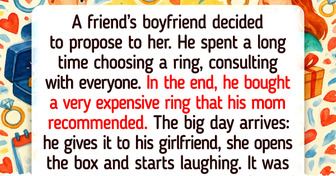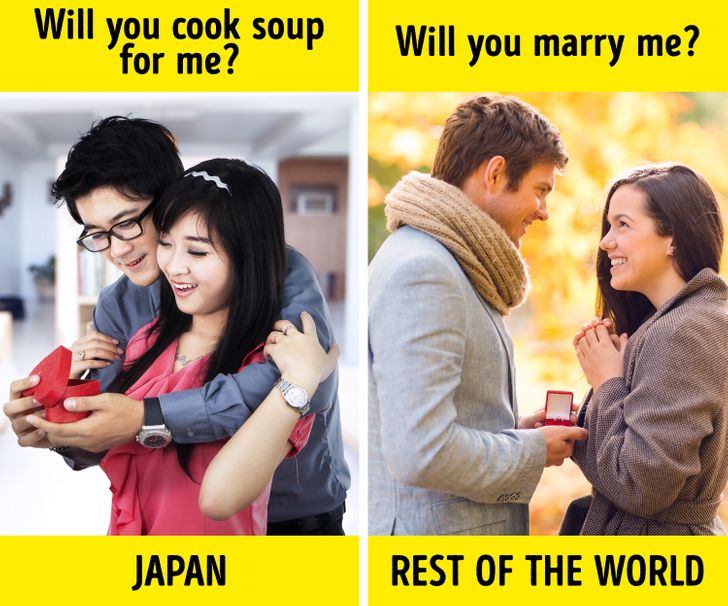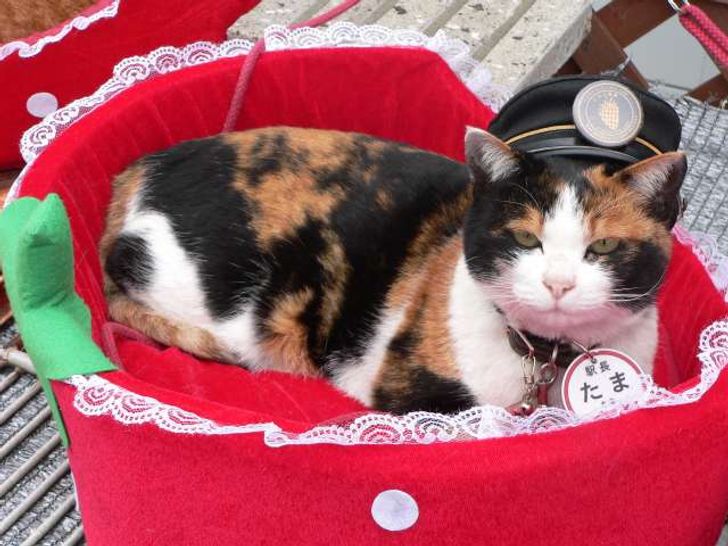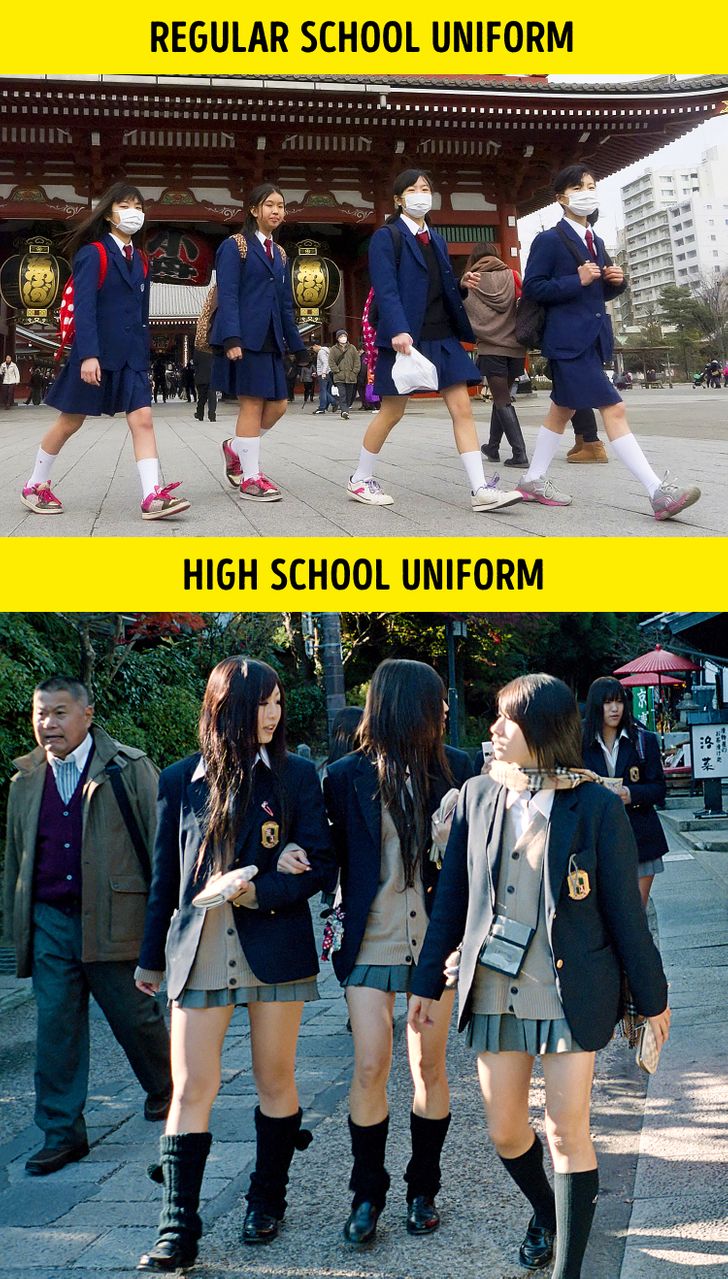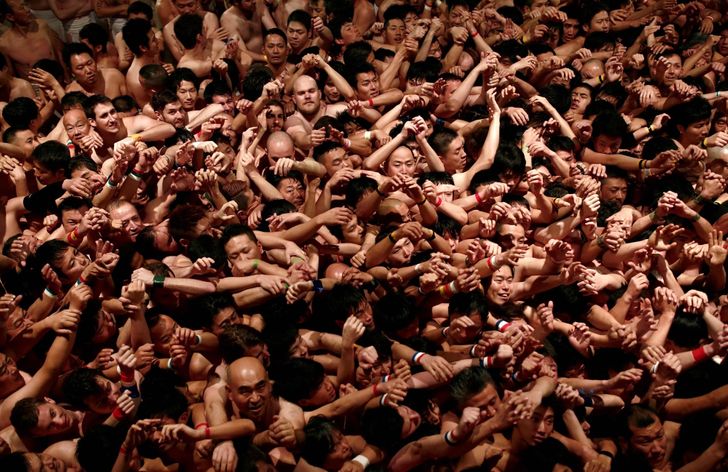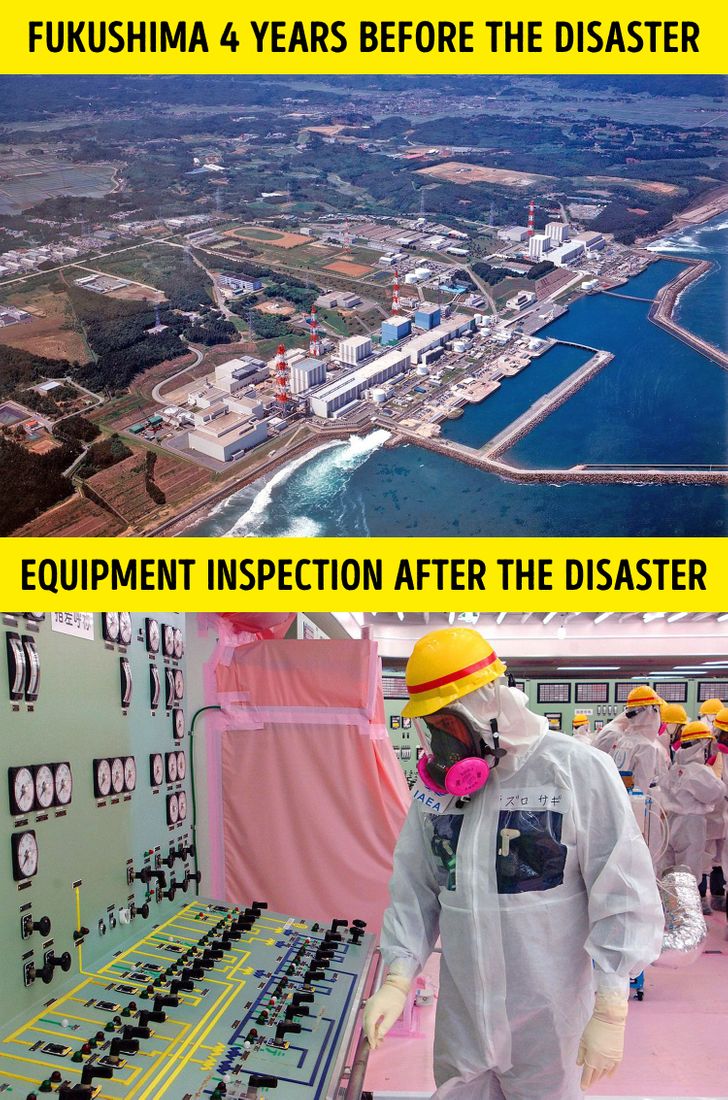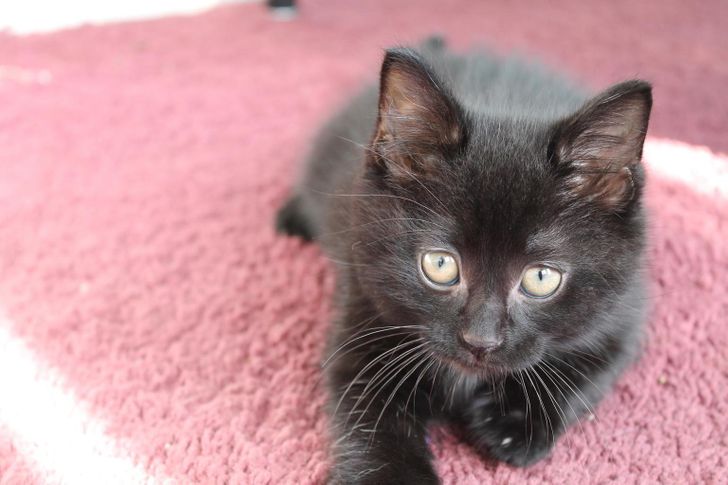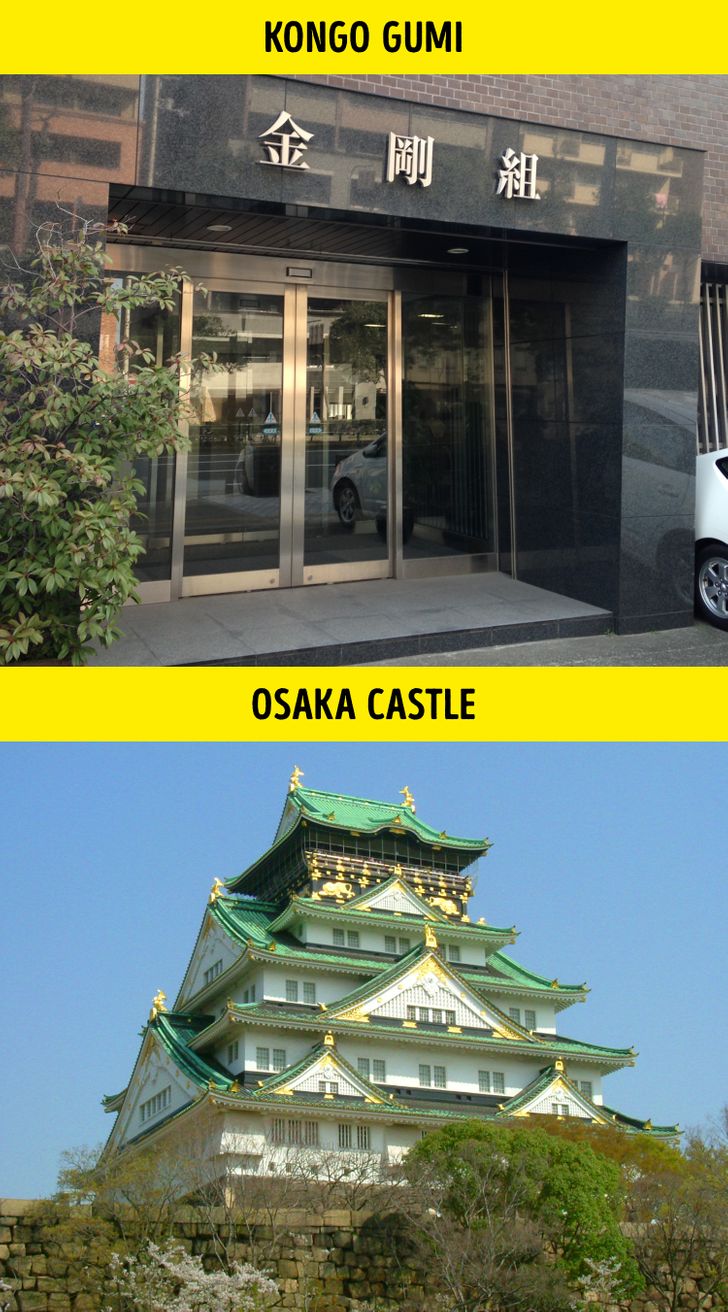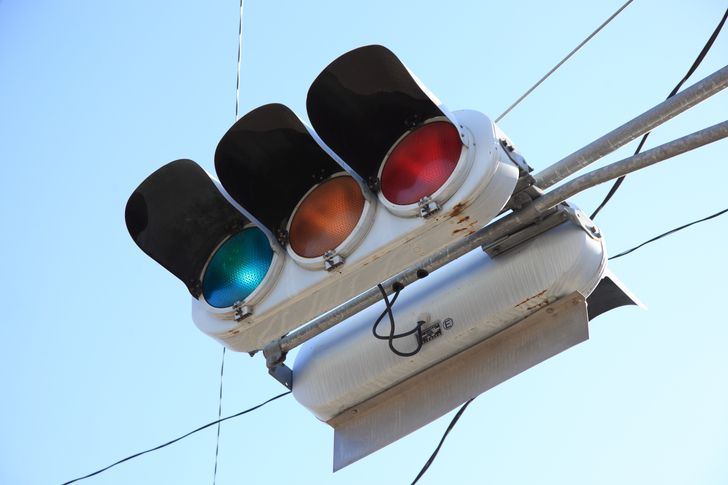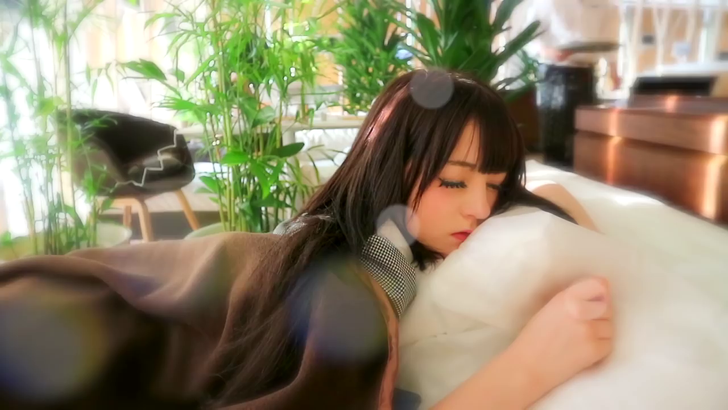Great for my.......
14 Astounding Facts About Japan That Prove a Parallel Universe Does Exist

Due to a powerful earthquake that happened in 2011 in Japan, the Earth started spinning 1.8 microseconds faster. So if you feel like you don’t have enough time, you know what to blame. But seriously, Japan is so unique that it had a chance to influence the planet’s rotation speed. It is truly a whole other universe and we found 16 facts that prove it.
Bright Side often gets impressed by the peculiarities of Japanese culture. Dive into it with us and you’ll find out why traffic lights shine blue instead of green in The Land of the Rising Sun.
1. The Japanese propose as if they’re hiring a chef.
The Japanese are really modest and shy which is why a traditional proposal is often presented in an indirect manner. For example, a man could ask his girlfriend: “Will you cook soup for me every day?” Alternatively, he might ask if his beloved is ready to wash his clothes and be buried in one grave next to him (the latter means that their love is so strong it would outlive both of them).
This tradition is slowly becoming outdated. Only really shy Japanese men would use this non-romantic way of expressing their feelings. Japanese women, on the other hand, expect their foreign lovers to express their feelings and desires openly. Also, a fiancée has to ask for the parents’ approval before proposing. The Japanese are quite conservative regarding this matter.
2. Some Japanese spend years in cyber cafes without leaving them.
Not all people in Japan have enough money to rent an apartment or even a capsule in a capsule hotel. Some of them have had to spend years in cyber cafes. The limited seating doesn’t always let you allow you to lay stretched out.
Aside from internet access, cyber cafes also provide their visitors with showers and free non-alcoholic beverages. The average price for staying in these places is lower ($12-22 a day) than in capsule hotels ($18-36 a day); this fact explains the popularity of these “shelters” among people with low salaries.
3. A cat or a dog can become a station master.
Do you remember the legend about the Roman Emperor Caligula who made his horse a senator? The Japanese aren’t crazy, but at Kishi Railway Station in Wakayama Prefecture a cat holds the high position of station master.
The first purring master was Tama. This cat greeted passengers and instead of money she received food. She even took part in the shooting of a local documentary. After her death, thousands of people came to pay their respects and she was enshrined at a nearby Shinto shrine as a spirit goddess.
In 2015, her position was taken by her successor, Nitama.
The station master at JR Ajigasawa Railway Station is a dog. His named Wasao (also known as busa kawaii which means “ugly but cute”). There’s also a film starring Wasao and people adore him.
Thanks to Tama and Wasao, the number of tourists who visit small towns has increased significantly: almost 120,000 people arrive annually in Ajigasawa to meet the dog.
4. There’s fish in the flood channels.
The water in the flood channels is really clean; people don’t litter in it and sewage doesn’t get mixed there either. Its quality is even better than tap water and fish swim freely in it. Underground water that is delivered to these channels could be used as ice or for cooking. This system is called kabata. In Shiga Prefecture the channels are constructed at different heights — the lower ones are used to wash dishes the remains of which get eaten by fish. If you leave a dirty plate for 3 hours, you won’t have to wash it — the carp will eat it all.
These channels are a point of interest in Japan. Paid tourist tours bring enough money for the repair and cleaning of the channels.
5. School students wear mini-skirts and knee-high socks even in winter.
Any time of the year, school students wear pleated mini-skirts with white, dark blue, or black knee-high socks. In anime school, girls wear really short skirts, but the majority of schools consider knee-high skirts acceptable.
Some fashionistas love to wear loose socks with mini-skirts to make their ankles look chubby and often break rules by shortening their skirts themselves. Most students wear shorts under their skirts. Many Japanese schools have common dressing rooms for male and female students. That’s why girls put on their sports uniforms in advance, right under their school uniform.
6. There are cafes where you can talk to owls.
Many people have heard about the cafes where you can spend time with cats. But what if you don’t love cats? Go to a goat cafe, or a bunny cafe, or an owl cafe.
There are a lot of different types of animal cafes in Japan. One of them is an owl cafe called Fukuro no Mise, in Tokyo. The place is so popular people stand in line for hours before it opens. By the way, it’s not a cafe as we are used to thinking about one: there is no food, just beverages. And talking to a bird will cost you $17.
There are strict rules regarding your communication with owls: you can only touch their backs or heads and all visitors are given instructions before they get to be with the birds.
7. Thousands of naked and semi-naked men take part in the Hadaka Matsuri festival.
The Hadaka Matsuri is an annual festival with over 9,000 male participants. Men wear a minimum of clothing: just a traditional Japanese loincloth, the fundoshi. They can also wear a kimono or be completely naked in some cases.
The festival has deep religious roots. It’s believed that men’s nudity absorbs evil forces and misfortune. After swimming in ice-cold water men try to catch charms made of willow branches as a Shinto priest throws them into the crowd. It is believed that they bring luck. The festival rarely goes by without broken noses or bruised body parts.
8. Even robots died at Fukushima.
In 2011, a disastrous earthquake provoked a 32 ft high tsunami that caused a horrible accident at the nuclear power plant Fukushima. The level of the radioactive contamination was so high it was impossible to get into the power plant and remove the remains of the molten fuel rods. 5 robots were sent there but they never came back. As soon as they reached the nuclear reactor, their circuits broke down.
9. In Japan black cats bring luck.
You will never see a Japanese person who decided to not cross the road because a black cat was sitting there. People in Japan believe that black cats bring luck. Single women are the luckiest owners of black cats: it’s believed that she’ll have a lot of fiancées.
10. One Japanese company existed for 14 centuries.
According to 2009 data, there are more than 21,000 companies older than 200 years old. The oldest company in the world, more than 14 centuries old, is Kongo Gumi. This construction company was established in 578 and specialized in constructing Buddhist temples. It built a lot of well-known buildings including Osaka castle.
The company survived several wars and hard periods but continued its work. During World War II, it shifted to constructing coffins. After the war, it came back to its main service and started using earthquake-resistant concrete constructions instead of wooden ones.
Only in 2006, due to bankruptcy, the company was bought by another firm.
11. Nightclubs in Japan have only been allowed to stay open past midnight since 2015.
In 1948, Japan adopted a law that forbids dancing after midnight in nightclubs, bars, and other public places. In the post-war years, nightclubs were places for adult entertainment. The situation has long changed but the restriction remained. In 2015, the law was revised and nightclubs and bars with appropriate lighting can now be open all night long.
12. People bite things on one Japanese TV show.
Japanese TV has a lot of bizarre shows and this is just one of them. The participants have to bite various inanimate objects to determine whether they’re made of chocolate or not. The sweets are made extremely similar to pieces of furniture, accessories, or shoes, and it’s really hard to tell if they’re real or not.
13. Japanese traffic lights have blue lights instead of green.
The Japanese language has a lot of words that don’t exist in other languages, but for centuries, they used the same word for “green” and “blue.” At the end of the millennium, the word “midori” appeared to identify the color green, but they still considered it to be a shade of blue.
Due to the confusion generated by the mix of colors, the Japanese can offer you a blue apple (but they actually mean “green”) and the green traffic light could have an ocean wave color or even be a bright blue.
14. You can take a nap in special cafes.
There are cafes where you can take a nap in a really soft, comfortable bed (you choose how much time you need). You can read a book or get earphones and listen to music. The staff will wake you up when necessary and bring you a cup of coffee. You’ll probably have the most amazing dreams there.
Do you know any unusual facts about Japan? Which festivals or TV shows do you know about? Share with us in the comments.
Comments
Ashinomaki Onseneki station in Fukushima Prefecture also has feline stationmasters, and their "schedules" are listed on the station's web site.
Also, most "green" traffic lights in Japan are actually green. While there are some blue lights, they are mostly being phased out.
Related Reads
11 Comics That Show a Tremendous Difference Between the Recent Past and the Present

18 Hilarious Morning Sights People Actually Woke Up To

20+ Girls Who Changed Only One Detail in Their Look and Hit the Jackpot

14 Actors Who Masterfully Played Opposite Genders

We Compared How Clothing on the Runway Looks on Models and Celebrities, and We Can’t Decide Who Impressed Us More

8 Ways to Deal With Difficult People Everyone Should Know About
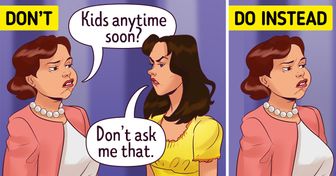
10 Dangerous Self-Care Mistakes We Make When Trusting Beauty Bloggers

20 Times Kindness Won the Argument Without Saying a Word

12 Moments That Prove Kindness Still Matters in a World That Forgot How
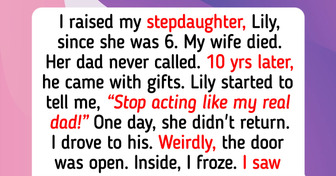
I Refused to Split the Bill of Food I Didn’t Eat—I’m Not a Walking ATM
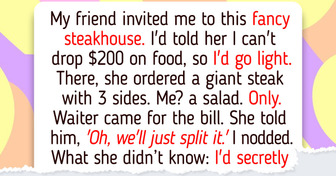
My Pregnant Roommate Tried to Kick Me Out—She Wasn’t Prepared for My Next Move
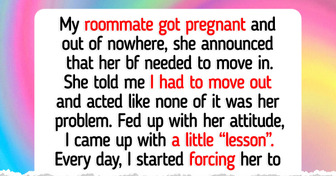
15 Times Romance Had Big Plans, but Real Life Wrote a Funnier Script
